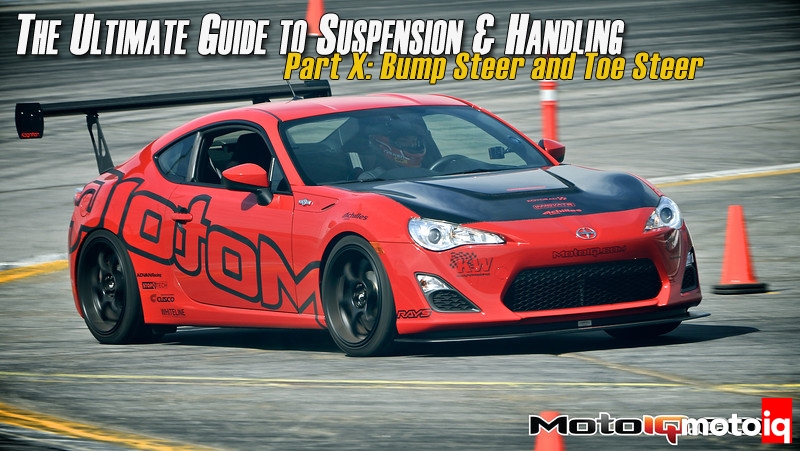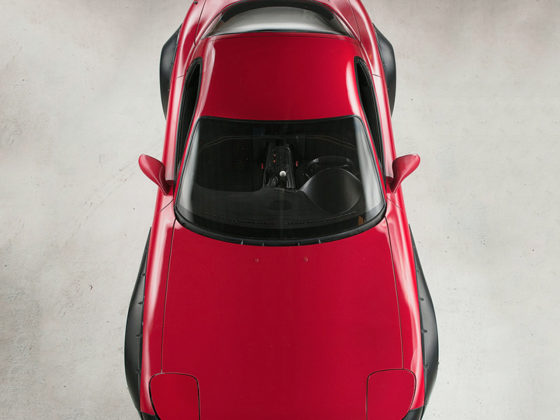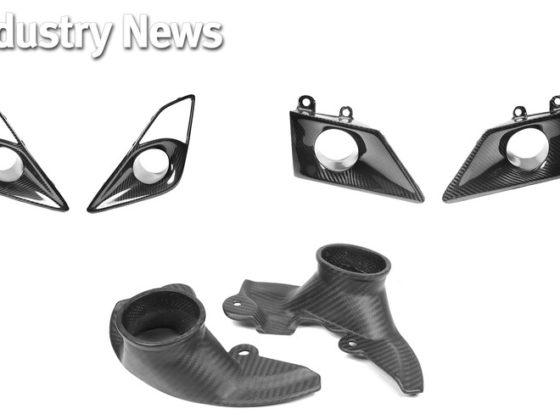,
On a McPherson Strut suspension, the tie rods must lie in a line pointing at the instant center between a line drawn vertically from the ball joint to the top pivot and a parallel line drawn from the inner pivot upwards parallel to the first line. That or the inner tie rod pivot has to be in line with the lower control arm inner pivot point. As long as the steering tie rods are located like this, there will be little bump steer. However most production cars have the steering rack placement compromised by packaging constraints so this location is often a compromise—one which is compounded by lowering. Lowering the car a lot gets the links further out of kilter with each other.
 Nissan Sentras have some of the worst bump steer of any car we have tinkered with yet. When lowered to a good ride height for racing, the front suspension has nearly as much bumpsteer as suspension travel! This makes a lot of steering wheel fight in bumpy turns, causes twitchiness under braking and causes the car to have difficult to cure mid turn understeer.
Nissan Sentras have some of the worst bump steer of any car we have tinkered with yet. When lowered to a good ride height for racing, the front suspension has nearly as much bumpsteer as suspension travel! This makes a lot of steering wheel fight in bumpy turns, causes twitchiness under braking and causes the car to have difficult to cure mid turn understeer. To help with bump steer, on racing Sentra's we actually mount the tie rod end on the opposite side of the spindle. Although this seems drastic, it gets rid of over 50% of the horrific amounts of bump steer that the stock location has when lowered. Ideally, the tie rod's center of rotation should be about 3/8″ higher but this solution is as easy as it is practical and it helps a great deal.
To help with bump steer, on racing Sentra's we actually mount the tie rod end on the opposite side of the spindle. Although this seems drastic, it gets rid of over 50% of the horrific amounts of bump steer that the stock location has when lowered. Ideally, the tie rod's center of rotation should be about 3/8″ higher but this solution is as easy as it is practical and it helps a great deal.What can you do to reduce bump steer? Many cars have aftermarket parts available to relocate the tie rod ends of the steering linkage. Tie rod ends with spherical bearings and spacers can be tuned to reduce bump steer by placing the tie rods at a more favorable angle. SPL and Whiteline make bump steer reduction kits for popular cars like the 240SX, 300ZX and EVO. If these parts are not available for your favorite car, then a local racecar fabricator can easily make them up for you by using spherical bearings and machining adaptors for them.
 Whiteline makes roll center and bump steer correction kits for many popular cars. The Whiteline kits allow you to lower your car further while still retaining function. Whiteline cleverly relocates the pivot points by using tie rod ends and ball joints with longer shanks. The above kit is for the FR-S/BRZ twins. We love the Whiteline kits because they save us the trouble of converting to spherical bearings and machining parts to adapt them as well as fabricating spacers. By using OEM style joints, the Whiteline kits are more streetable and long term durable than converting over to spherical bearings which are more of a race car thing.
Whiteline makes roll center and bump steer correction kits for many popular cars. The Whiteline kits allow you to lower your car further while still retaining function. Whiteline cleverly relocates the pivot points by using tie rod ends and ball joints with longer shanks. The above kit is for the FR-S/BRZ twins. We love the Whiteline kits because they save us the trouble of converting to spherical bearings and machining parts to adapt them as well as fabricating spacers. By using OEM style joints, the Whiteline kits are more streetable and long term durable than converting over to spherical bearings which are more of a race car thing. Here is a Whiteline kit installed on a Subaru STI. Everything lines up nicely.
Here is a Whiteline kit installed on a Subaru STI. Everything lines up nicely. It’s fairly easy to design a suspension system for a multi link front suspension that does not have much bump steer. To do so, the steering tie rods must lie between the two vertical lines drawn between the upper and lower control arm’s pivots while pointing at the suspension’s instant center like what is shown in this picture.
It’s fairly easy to design a suspension system for a multi link front suspension that does not have much bump steer. To do so, the steering tie rods must lie between the two vertical lines drawn between the upper and lower control arm’s pivots while pointing at the suspension’s instant center like what is shown in this picture.




4 comments
I lowered my 991.2 Carrera GTS (2017) by approximately 30 mm in the front using Öhlins shocks. The lower control arms are hence directed somewhat upwards, however, the rod is also directed upwards. Maybe, they are nearly parallel. I am not sure if I should compensate for bump steer or this modern car compensates it automatically. I do not know if it developes a significant amount of bum steer as it is now.
As long as you didn’t correct the roll center you will be ok.
If I see it correctly, the roll center is lowered by lowering the car.
No